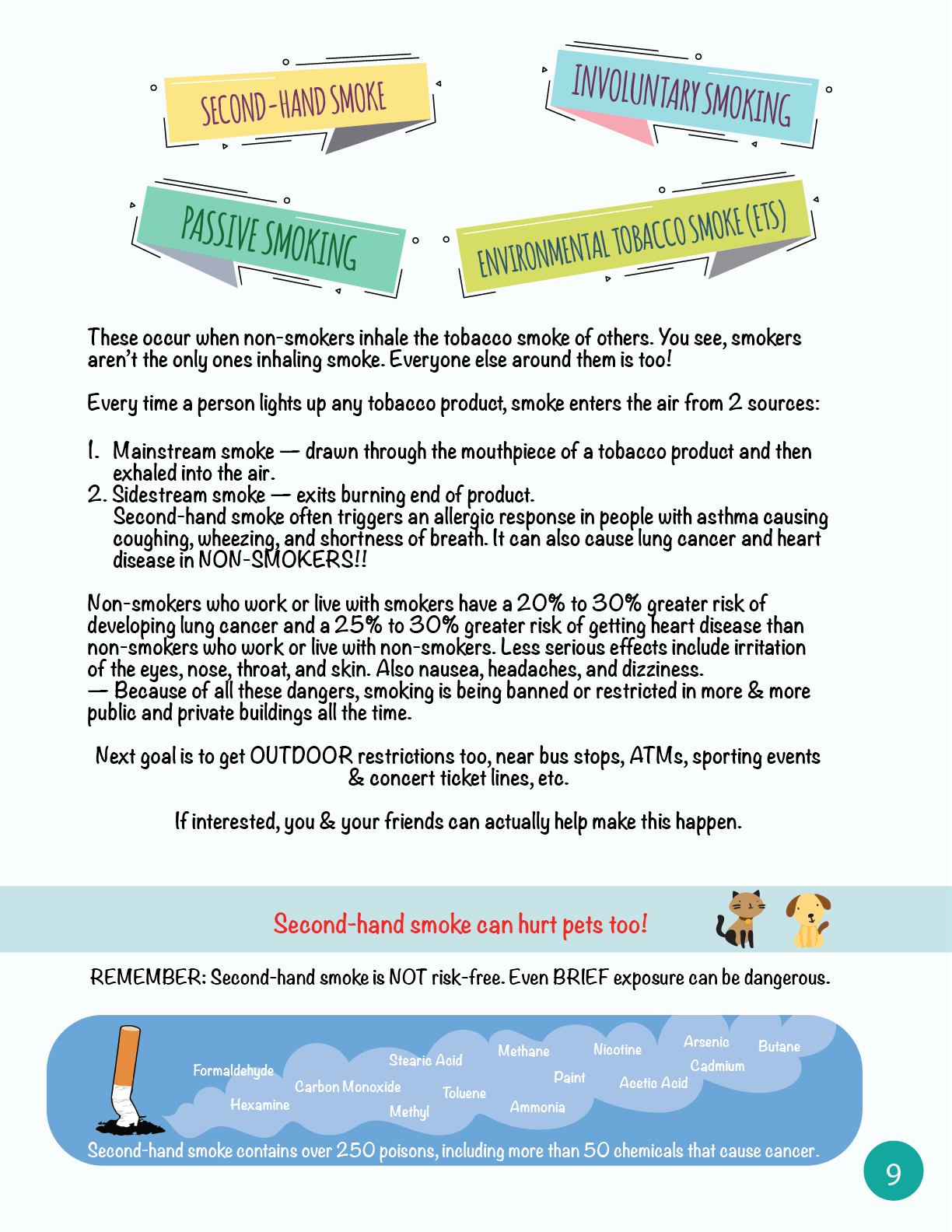
CARBON MONOXIDE
AMMONIA
ACETONE
METHANOL
FORMALDEHYDE
ACETALDEHYDE
HYDROGEN SULFIDE
METHYL-CHLORIDE
HYDROGEN CYANIDE
NITROGEN OXIDES
"SECOND-HAND SMOKE"
"INVOLUNTARY SMOKING"
"PASSIVE SMOKING"
"ENVIRONMENTAL TOBACCO SMOKE (ETS)"
These occur when non-smokers inhale the tobacco smoke of others. You see, smokers aren't the only ones inhaling smoke. Everyone else around them is too!
Every time a person lights up any tobacco product, smoke enters the air from 2 sources:
1. Mainstream smoke- drawn through the mouthpiece of a tobacco product and then exhaled into the air
2. Sidestream smoke- exits burning end of product. Second-hand smoke often triggers an allergic response in people with asthma causing coughing, wheezing, and shortness of breath. It can also cause lung cancer and heart disease in NON-SMOKERS!!
Non-smokers who work or live with smokers have a 20% to 30% greater risk of developing lung cancer and a 25% to 30% greater risk of getting heart disease than non-smokers who work or live with non-smokers. Less serious effects include irritation of the eyes, nose, throat, and skin. Also nausea, headaches, and dizziness. -Becasue of all these dangers, smoking is being banned or restricted in more & more public and private buildings all the time.
Next goal is to get OUTDOOR restrictions too, near bus stops, ATMs, sporting events & concert ticket lines, etc. If interested, you & your friends can actually help make this happen!
Second-hand smoke can hurt pets too!
Second-hand smoke contains over 250 poisons, including more than 50 chemicals.
REMEMBER: Second-hand smoke is NOT risk-free. Even BRIEF exposure can be dangerous!!
Lesson Progress
- Introduction
- Tobacco: WHY you should be skeptical
- Major Harmful Ingredients in Tobacco
- Tobacco Risks, Hazards & Costs
- Immediate Effects Noticed by New Smokers
- More Problems Caused by Smoking
- Special Concerns About Smoking
- More Special Concerns About Smoking
- When non-smokers inhale
- Cigars Are Cool?
- Smokeless Tobacco
- Smoking Cessation
- More Ideas for Smoking Cessation
- $ UP IN SMOKE $